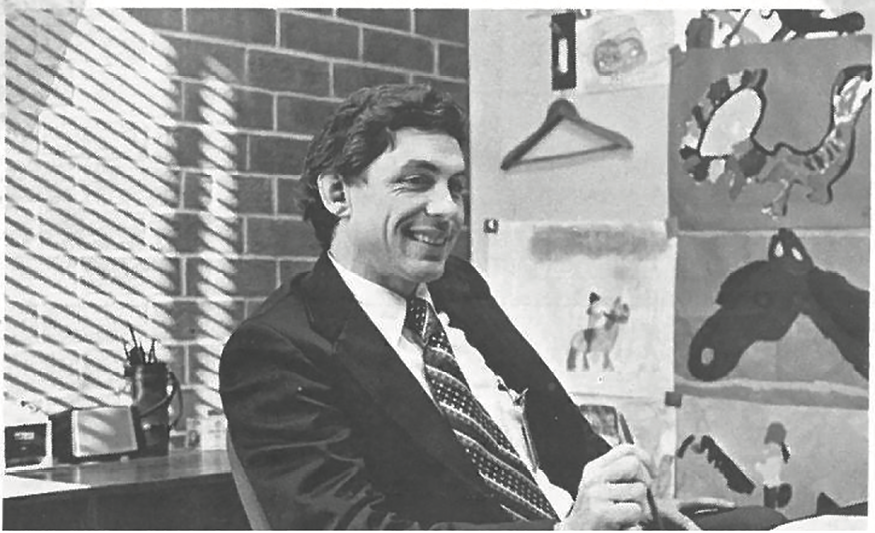- Home
- Media Kit
- MediaJet
- Current Issue
- Past Issues
- Ad Specs-Submission
- Reprints (PDF)
- Photo Specifications (PDF)
- Contact Us
- PRIVACY POLICY
- TERMS OF USE
![]()
ONLINE
![]()
ONLINE

A Staple in
the Modern World
Editors’ Note
Award-winning engineer Paul McEnroe developed state-of-the-art products the world depends upon today. During his distinguished career, McEnroe was known for visionary engineering and for sound business management. In 23 years with IBM, he delivered innovations that became industry standards. He is perhaps most widely recognized as the developer of the Universal Product Code (UPC), commonly known as the barcode. He created the first commercial application of laser technology, the barcode scanner, and the magnetic code for Stock Keeping Unit (SKU) marking. Today, McEnroe enjoys ranching in the Santa Ynez Valley with his wife, Tina.

Paul McEnroe in 1974 as he led the development of the barcode
Will you discuss your career journey?
Life began for me in an orphanage, advanced by loving adopting parents to a modest Midwestern home, a good local education, graduate school, and a beginning job as an engineer with IBM. That dialed in nine years of work in groundbreaking technologies, especially scanning, guided by outstanding and experienced engineers, all done while attending Stanford’s graduate schools of electrical engineering and business administration. Then opportunity knocked in 1969. IBM asked me to start them in a new business, and I would get to pick the business which had to be somewhat peripheral to the pure computer market. After several months of picking, with two great compatriots, point-of-sale became the target business. Point-of-sale needed item identification and, luckily for me, that required scanning which had been my focus. To hit our chosen target, what we had to do was to come up with some kind of item marker that could easily be printed and scanned. In other words, a code.
Meanwhile, the Supermarket Institute recognized the need for major improvements in operational efficiency in faster checkout, inventory management, and marketing. They issued a request for proposals of item marking with automatic reading. Four years had passed from the time IBM asked me to start them in a new business and in the meantime, my team had developed a code and basically ours was selected from about 14 proposed codes to be the new international standard, or as it came to be known, the Universal Product Code (UPC). This year marks the 50th anniversary of that momentous selection.

McEnroe on a horse at his Santa Ynez Valley ranch (top)
What did you learn during the process of developing the barcode?
Coming up with the code was not at all like getting a bright idea out of the middle of the blue. First came lining up funding to do something – IBM executives were my venture capitalists. They were just as tough as venture capitalists, too. Next was pulling together a team. Selecting a small number of just the right people was paramount. Fortunately, IBM was fertile ground for that. There were many different kinds of codes, and of different technologies. An extremely low error rate was probably the most important characteristic required of the code and the technology. We did an immense amount of error analysis before proposing our code.
While the code was an essential element, the systems engineering surrounding the code was itself a vast undertaking, and one that was often unrecognized or at least underestimated. New technologies in lasers, optical scanning, magnetic storage, store level communications systems, integrated circuits, and duplexed control systems were all incorporated to make our supermarket and retail store system offerings economically viable. Without all of these subsystems working together with the code, the overall complex – including grocery producers and manufacturers, supermarket headquarters, warehouses, stores, and, of course, the consumer – would not have been sufficiently well-served for the system to rise from its bootstraps and continue on for the 50 years we have already seen.
How has the barcode become a staple in the modern world?
The barcode has become a staple in the modern world because it worked reliably from the very beginning, and because its parameters were well-thought-out in its initial design. It had to work for several years with in-store printing using inexpensive low-quality printers before manufacturers were incorporating the code directly into the grocery packaging. Most codes would have had high error rates in these early times. That would have been the death of barcode scanning. The parameters included sufficient digits for the entire world to mark their products, while at the same time utilizing a sufficiently small area on the package.
“The key message I want to convey in the book is that it was a team effort, and a long-term but classic engineering systems development program that provides understanding, knowledge, and hopefully some incentive to future developers.”
What interested you in writing the book, The Barcode, and what are the key messages you wanted to convey in the book?
I started out writing a memoir for family and friends. The initial feedback they gave was that the part of the book on the barcode would be of interest to people everywhere. In addition, there was almost nothing written about the development of the code and the system in which it performed. That further led to misunderstandings and errors in the media about its development. In consideration of all these things, I removed most of the personal/family content as well as the non-barcode technical content from the book. The key message I want to convey in the book is that it was a team effort, and a long-term but classic engineering systems development program that provides understanding, knowledge, and hopefully some incentive to future developers.
.png)
What advice do you offer to young people interested in a career in technology?
I would advise young people who are interested in a career in technology to develop a very broad set of interests. Within those interests, dig deep in your understanding of how and why they function. When you look at how things are working or not working in the world around you, imagine what could be different. Look especially at those things that may be improved by an application of technology that you or your company know or have interest in. Once you find a point of interest or focus, create a plan in your mind. Think of the kinds of people that would be helpful in executing that plan. Don’t try to do it all yourself. Communicating with others is critically important. Teams solve more problems than individuals. Cultivate a team. Promote your team to your funding source, your company or venture capitalists or whomever. Take on your problems by breaking them down into smaller parts and farming out those parts, either within your team or to resources far away. Persevere, persevere, and persevere some more.![]()